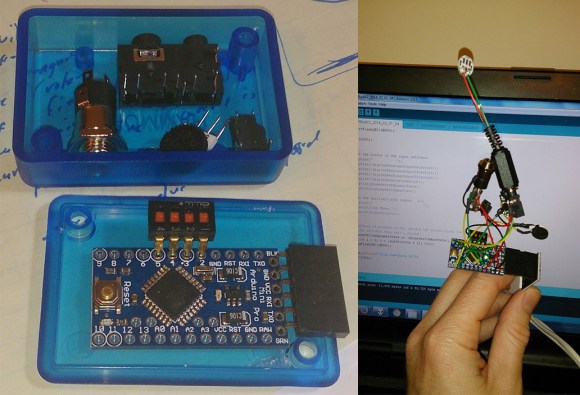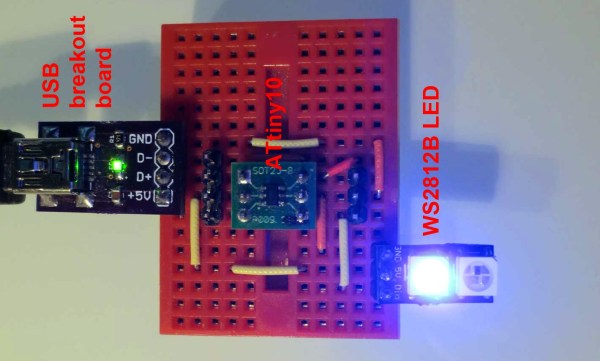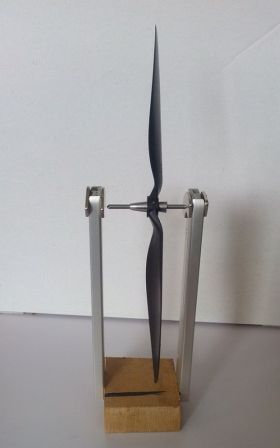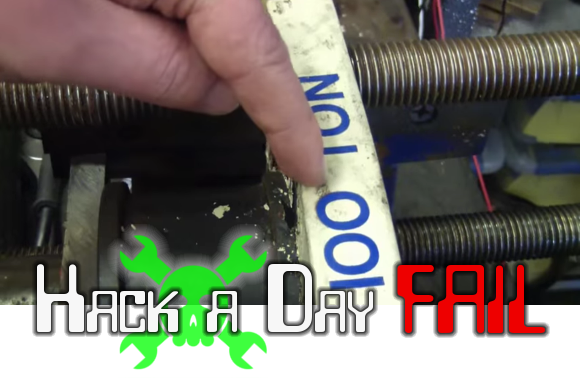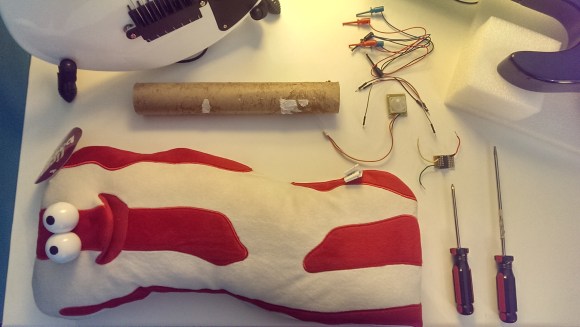
The folks over at [gTar] decided to create a motion activated talking bacon plush toy to greet visitors to their office.
They started with a toy called My First Bacon, available from ThinkGeek — it’s a plush toy that exclaims “I’m Bacon!” when you squeeze it. But then they cut him open. We can’t imagine what must have been going through this poor self-aware Bacon’s mind!
The hack itself is quite simple. They are basically replacing the “squeeze” circuit with an IR motion sensor — a PIR sensor from SparkFun to be precise. In addition to that they needed a small inverter IC. This is because the standard talking bacon module requires a positive leading edge signal in order to trigger the audio output, and their PIR sensor drives an output pin low — slap on an inverter IC (they had an old schmitt trigger lying around) and you’re ready to go!
Continue reading “Talking Bacon Plushie Greets You At The Door”

